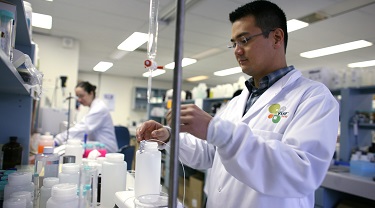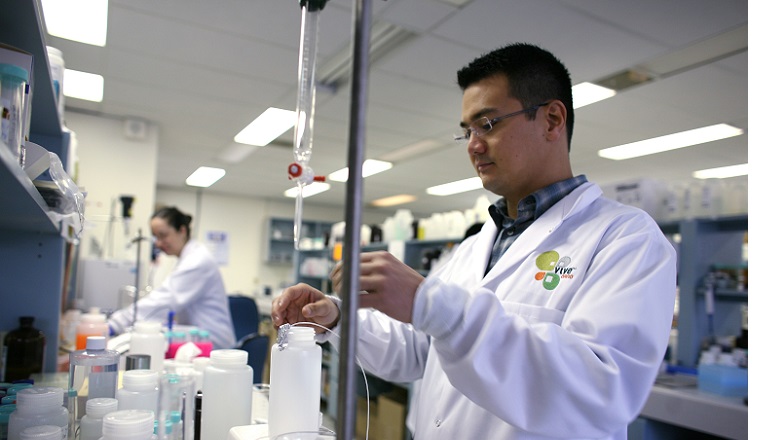Making a difference in how we grow food to feed our families has always been very motivating and exciting to me and the team at Vive. That motivation has only become stronger in the last few years as farmers across the United States have begun to rapidly adopt our products. As a company that is scaling up quickly, we’re evolving our business to deal with a whole new set of challenges that are very different from those we faced when we were a startup looking to commercialize our technology.
We launched Vive Crop Protection in 2006. Our Mississauga-based company provides products and technology to help farmers improve their yields through an effective and efficient application of pesticide and fertilizer at the same time.
When we started Vive, the chemical industry around agriculture was struggling with many of the same issues the pharmaceutical industry had about 10 to 15 years before. There were very few new chemistries—the agriculture industry equivalent of new drugs—coming to market. There was a real need to create innovation through more effective delivery of the existing chemistries.
Our Allosperse Delivery System changes the behaviour of the active ingredients in pesticides used in organic and conventional food production. For instance, imagine you have a pesticide that currently doesn’t mix with fertilizers and, therefore, can’t be applied at the same time. Our delivery system contains the pesticide’s active ingredients in tiny polymer “shuttles” to prevent unwanted problems with mixing.
In 2016, Vive became the first company to receive the U.S. Environmental Protection Agency (EPA) approval for the use of nanotechnology in a pesticide product for food use. Our products help growers improve crop production through a more efficient and effective application of pesticide and fertilizer while reducing their environmental impact.
Today, farmers in the United States are using our technology on over 650,000 acres of farmland and we’re looking forward to launching it in Canada in 2021. I think our story offers valuable lessons for cleantech entrepreneurs looking to commercialize a new product, and keep growing once they do.
1. A product farmers want to buy
Our biggest challenge wasn’t creating the technology. It was making a finished product that looked and felt like something a farmer would typically use. That process is much more of an art than a science. For those unfamiliar with the basic features of agricultural chemicals, we needed to ensure our products:
- can stay stable for up to two years;
- spread in a uniform way when sprayed on the target seed or plant; and
- don’t foam when added to the spray tank.
It took us two years to go from our original technology to something that looked and felt like a product that a grower would be excited to buy—a major challenge for companies entering the agricultural sector.
2. Becoming a Cleantech manufacturer
When we started the company, we were told that as a manufacturing-based business in the chemical industry, it would take us seven to 10 years to get our first product to market. I thought that was outrageous at the time, but we literally launched our first product commercially on our 10th anniversary.
There were three contributing factors:
- We’re in a highly regulated industry.
- It took longer than expected to get our technology to a finished product.
- We didn’t initially set out to be a manufacturing company. We thought we’d be primarily a technology development company working with other manufacturers as our market access point. But about three years ago, we decided to transition into manufacturing. Had we made that decision sooner, our products might have gone to market quicker.
3. A viable prototype
To convince customers of the value of our product, we needed to be able to demonstrate it. As a cleantech entrepreneur, it’s not enough to go out with just a concept. If it’s a new technology, you need a prototype and/or some way to really demonstrate what you’re trying to sell. Without it, you won’t get the feedback you need in order to know if what you have is valuable or if it needs to be modified or redesigned to appeal to your target audience.
Conventional wisdom entrepreneurs often hear: You want to be looking for market “pull,” not technology “push.” I don’t accept that. The market can’t tell you anything unless you have enough of a technology push to be able to educate the market on what you’re selling. My advice is: Develop a prototype, understand what you have and go out and sell it, then adjust what you’re pushing based on the market pull you encounter.
EDC has been open and willing to help provide us advice and guidance as we think about U.S. market opportunities.
4. Managing for growth
After a lengthy product development phase, Vive’s products gained EPA approval in the U.S. three years ago and now our sales are growing quickly. That means we’ve gone from being a small startup launching commercially and generating its first revenue to a business that must grow extremely rapidly at scale. That has brought an entirely new set of challenges. My focus now as CEO is developing good habits throughout the organization to support it as it scales rapidly to a business in the $10- to $100-million sales range. That includes:
- reinforcing the company values;
- ensuring that we have broad alignment on what we’re trying to accomplish as an organization over the next year;
- keeping track of how we’re doing relative to our key strategic goals; and
- ensuring we maintain focus.
Vive has been fortunate to participate in the Lazaridis ScaleUp Program offered by the Lazaridis Institute at Wilfred Laurier University in Waterloo, Ontario. It has been transformational for our business. It’s provided us with the tools we need to scale up to $100 million in sales and I would recommend cleantech entrepreneurs in a similar position seek out this kind of training.
One aspect of management I’m focusing more on these days is emotional management, both for myself and encouraging it among our employees. In a seasonal industry, like agriculture, there are a few natural ups and downs in the business cycle. Periods of incredible activity are often followed by long periods where nothing much happens and you’re just waiting. You need to be able to manage those ups and downs and I do that by asking myself, “Am I above or below the line right now?”
When you’re above the line, you’re in a positive, creative, problem-solving frame of mind and looking optimistically at how to go ahead. If you’re below the line, then you’re in more of a stressed, defensive, negative, risk-averse mental frame. It’s important for entrepreneurs to be flexible and open to change: “We just got some bad news about a trial result. I need to reset and bring an above-the-line perspective into the next meeting.”

Technology in agriculture
I have found that agriculture has an undeserved reputation as an older, conservative industry that’s slow to adopt new technologies. My experience has been the exact opposite. While society struggles with the introduction of self-driving cars, farmers have used self-driving tractors for years. Farmers are interested in anything that will improve their bottom line, improve soil health and the ability to hand down an awesome farm property to the next generation.
Canadian cleantech companies that can add value and improve yield for growers while making products that are easy for them to use will have a world of opportunities at their feet.
How EDC helped
One of the biggest opportunities we’re excited to be working with EDC on is as we start to look at markets outside of the U.S. There are huge global opportunities for what we’re doing and a lot of markets outside of the U.S. are more challenging to access. They may have more complicated regulatory structures or more complicated business structures, and these are areas where EDC has been open and willing to help provide us advice and guidance as we think about these market opportunities.








